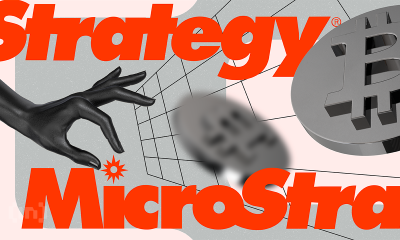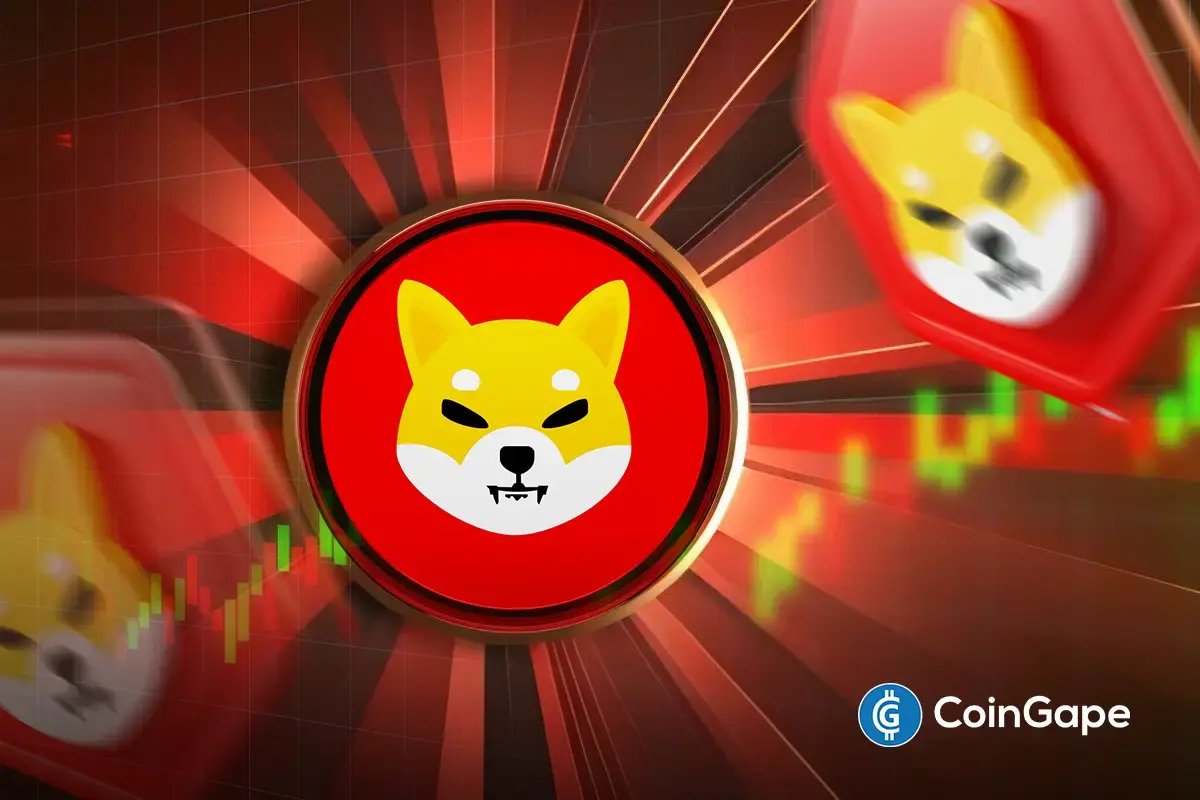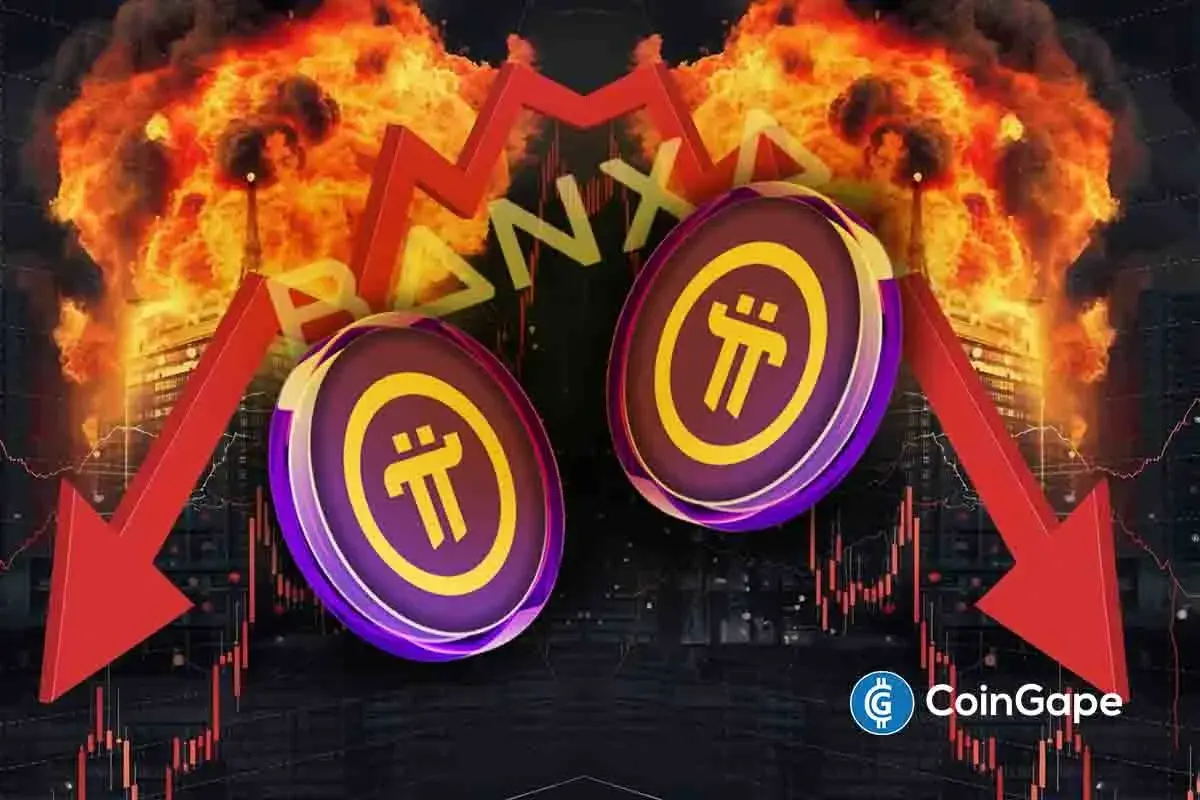Market
Is Now the Time to Buy?

Leading meme coin Shiba Inu (SHIB) has seen a significant drop in value, falling by 20% over the past week. Due to this double-digit price fall, a key on-chain metric suggests that SHIB has become undervalued, indicating it might be a good time to buy.
However, while the MVRV ratio suggests a favorable buying opportunity, SHIB’s downtrend may not be over.
Shiba Inu Becomes Undervalued, But There Is a Catch
An assessment of SHIB’s market value to realized value (MVRV) ratio using a 30-day moving average confirms its undervalued status. According to Santiment’s data, this ratio is -29.35% at press time.
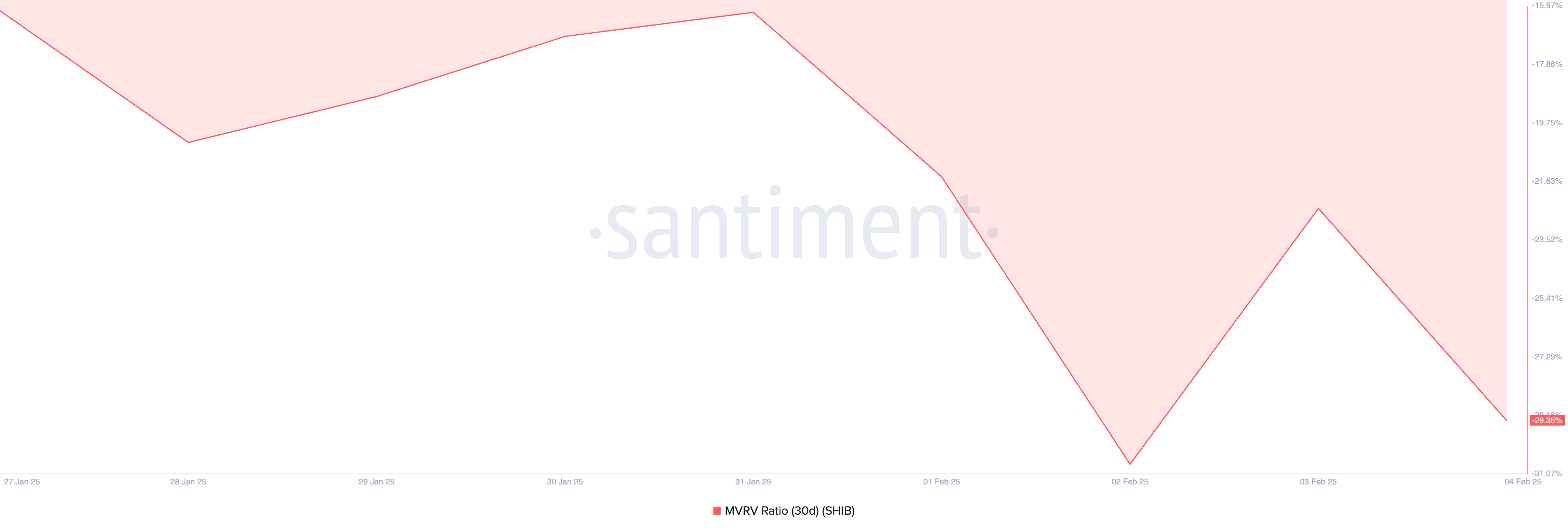
An asset’s MVRV ratio identifies whether it is overvalued or undervalued by measuring the relationship between its market value and its realized value. When an asset’s MVRV ratio is positive, its market value is higher than the realized value, suggesting it is overvalued.
On the other hand, as with SHIB, when the ratio is negative, the asset’s market value is lower than its realized value. This suggests that the coin is undervalued compared to what people originally paid for it.
Historically, negative MVRV ratios present a buying opportunity for those looking to “buy the dip” and “sell high.” However, the strong bearish sentiment plaguing SHIB suggests that the likelihood of a price rebound in the near term may be low.
Notably, the bearish bias is reflected by the meme coin’s negative funding rate of -0.03% at press time.
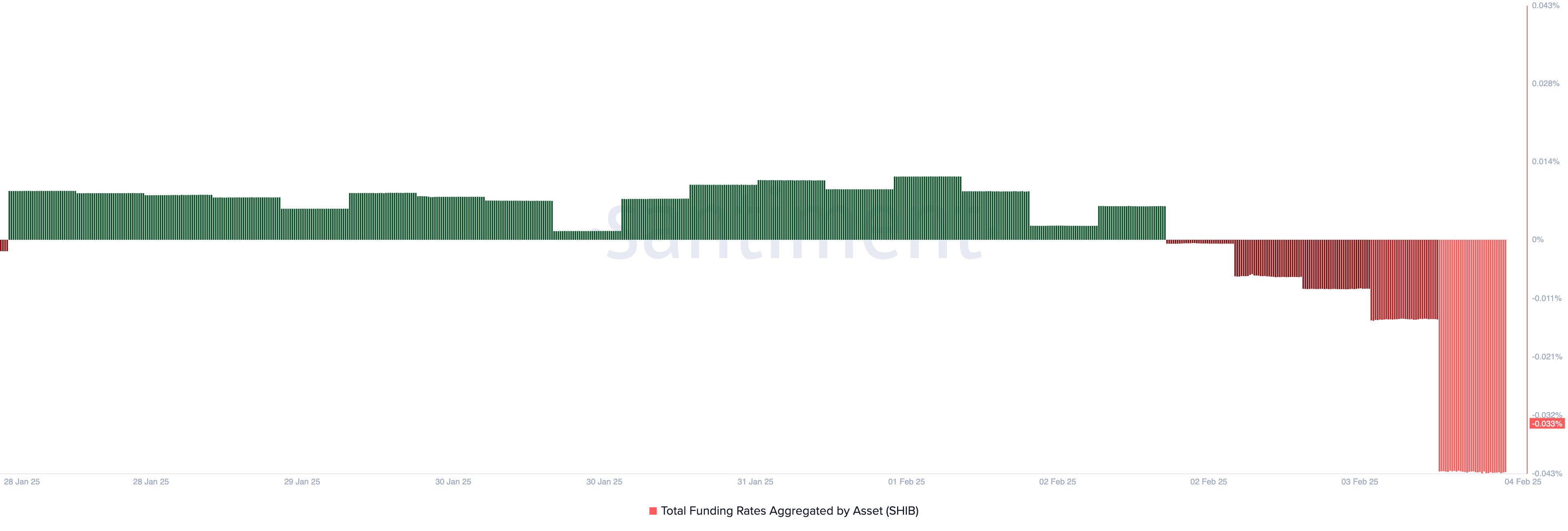
The funding rate is the periodic payment exchanged between long and short traders in perpetual futures markets. It is designed to keep the price of a derivative close to the underlying asset. When the funding rate is negative, short traders pay long traders, indicating bearish sentiment as more traders bet on the price going down.
Therefore, while SHIB’s MVRV ratio indicates that the meme coin is currently undervalued, making it an attractive entry point for traders looking to “buy the dip,” the prevailing bearish sentiment suggests that the downtrend may not be over.
SHIB Price Prediction: Will Buyers Step In?
On the daily chart, SHIB’s Chaikin Money Flow (CMF) supports the bearish outlook above. As of this writing, the CMF indicator is below zero at -0.03, indicating a strong selling activity among traders.
An asset’s CMF measures money flow into and out of its market. When its value is below zero, buying activity is minimal. If SHIB’s demand remains low, it will extend its decline to $0.000014.
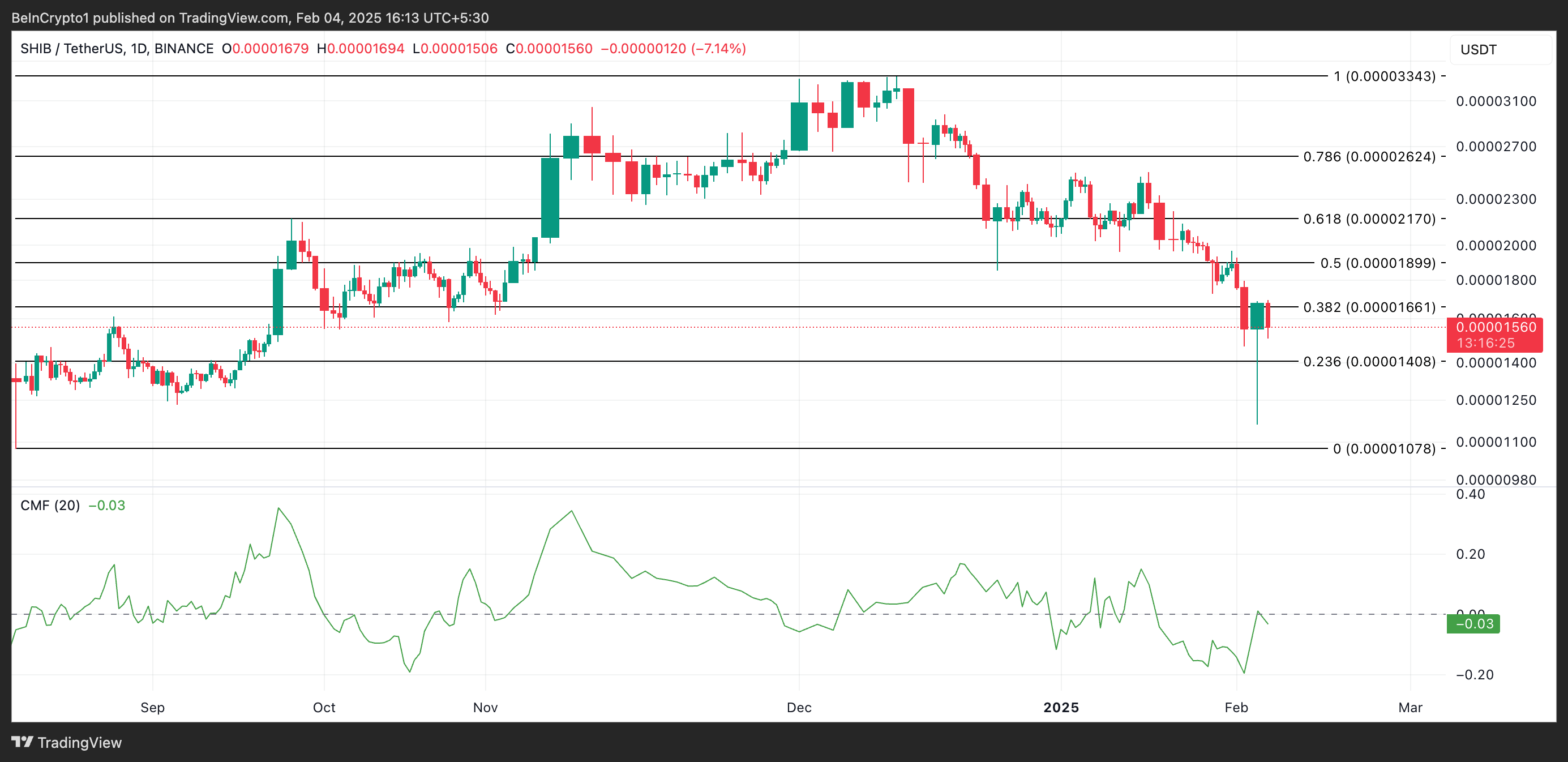
Conversely, if coin distribution stalls, it could drive SHIB’s value up to $0.000016.
Disclaimer
In line with the Trust Project guidelines, this price analysis article is for informational purposes only and should not be considered financial or investment advice. BeInCrypto is committed to accurate, unbiased reporting, but market conditions are subject to change without notice. Always conduct your own research and consult with a professional before making any financial decisions. Please note that our Terms and Conditions, Privacy Policy, and Disclaimers have been updated.
Market
Is XRP’s Low Price Part of Ripple’s Long-Term Growth Strategy?

Ripple’s recently acquired Hidden Road has secured a broker-dealer license from the Financial Industry Regulatory Authority (FINRA). This marks a significant milestone in expanding its prime brokerage services for institutional investors.
Market watchers see it as a deliberate strategy by Ripple to build infrastructure and position itself for future growth. That being said, traders are expecting that XRP’s value will rise later.
Ripple Expands Institutional Presence with Hidden Road’s FINRA License
According to the latest press release, Hidden Road Partners CIV US LLC was granted approval. The license now enables the firm to provide a broader suite of regulatory-compliant services, including clearing, financing, and prime brokerage for fixed-income assets to institutions.
Noel Kimmel, President of Hidden Road, highlighted that the license was a pivotal development for the company. According to him, it enhances Hidden Road’s ability to operate in traditional financial (TradFi) markets.
“As a FINRA member, we will be able to bring our best-in-class, technology-driven fixed income service offering to an expanded universe of institutional clients. Our business has tremendous momentum, and we look forward to continuing to provide superior execution and support to our clients amidst today’s exceptionally dynamic market environment,” Kimmel said.
The FINRA approval follows Ripple’s $1.25 billion acquisition of Hidden Road. Announced on April 8, 2025, this was one of the largest deals in the digital assets sector.
The move positions Ripple as the first cryptocurrency company to own a global, multi-asset prime broker. Experts believe the acquisition and subsequent license are part of a broader strategy Ripple is employing.
“Hidden Road just secured a broker-dealer license right after Ripple’s acquisition. This isn’t a coincidence, it’s a statement. XRP is not playing checkers. It’s playing regulatory chess,” an analyst wrote on X (formerly Twitter).
Is Ripple Behind XRP’s Low Price? Analyst Thinks So
In fact, analysts also claim that XRP’s neutral reaction to recent milestones isn’t a sign of weakness but rather a strategic move. In a recent analysis, crypto analyst Levi argued that the current price of XRP, hovering around $2, is not coincidental, but rather a result of Ripple’s deliberate approach.
He suggested that the low price is designed to allow Ripple to operate under the radar while making key strategic moves, such as the Hidden Road acquisition.
“Hidden Road isn’t a flex. It’s infrastructure. It’s the final puzzle piece — giving Ripple a fully integrated, lightning-fast, global value settlement system,” he stated.
The analyst emphasized that while the public focused on Ripple’s legal battles with the SEC, the company quietly built its global value settlement system behind the scenes.
“XRP at $2 isn’t undervalued — it’s deliberately suppressed. When the switch flips, the revaluation won’t be gradual — it’ll be instant,” Levi noted.
In his view, those who have invested early will be positioned to benefit as the market shifts. Meanwhile, XRP, after hitting an all-time high earlier this year, has continued to decline.

At press time, the altcoin was trading at $2.0. According to BeInCrypto data, this represented a decline of 1.0% over the past day.
Disclaimer
In adherence to the Trust Project guidelines, BeInCrypto is committed to unbiased, transparent reporting. This news article aims to provide accurate, timely information. However, readers are advised to verify facts independently and consult with a professional before making any decisions based on this content. Please note that our Terms and Conditions, Privacy Policy, and Disclaimers have been updated.
Market
XRP Price Weakens—Further Losses on The Table?

Aayush Jindal, a luminary in the world of financial markets, whose expertise spans over 15 illustrious years in the realms of Forex and cryptocurrency trading. Renowned for his unparalleled proficiency in providing technical analysis, Aayush is a trusted advisor and senior market expert to investors worldwide, guiding them through the intricate landscapes of modern finance with his keen insights and astute chart analysis.
From a young age, Aayush exhibited a natural aptitude for deciphering complex systems and unraveling patterns. Fueled by an insatiable curiosity for understanding market dynamics, he embarked on a journey that would lead him to become one of the foremost authorities in the fields of Forex and crypto trading. With a meticulous eye for detail and an unwavering commitment to excellence, Aayush honed his craft over the years, mastering the art of technical analysis and chart interpretation.
As a software engineer, Aayush harnesses the power of technology to optimize trading strategies and develop innovative solutions for navigating the volatile waters of financial markets. His background in software engineering has equipped him with a unique skill set, enabling him to leverage cutting-edge tools and algorithms to gain a competitive edge in an ever-evolving landscape.
In addition to his roles in finance and technology, Aayush serves as the director of a prestigious IT company, where he spearheads initiatives aimed at driving digital innovation and transformation. Under his visionary leadership, the company has flourished, cementing its position as a leader in the tech industry and paving the way for groundbreaking advancements in software development and IT solutions.
Despite his demanding professional commitments, Aayush is a firm believer in the importance of work-life balance. An avid traveler and adventurer, he finds solace in exploring new destinations, immersing himself in different cultures, and forging lasting memories along the way. Whether he’s trekking through the Himalayas, diving in the azure waters of the Maldives, or experiencing the vibrant energy of bustling metropolises, Aayush embraces every opportunity to broaden his horizons and create unforgettable experiences.
Aayush’s journey to success is marked by a relentless pursuit of excellence and a steadfast commitment to continuous learning and growth. His academic achievements are a testament to his dedication and passion for excellence, having completed his software engineering with honors and excelling in every department.
At his core, Aayush is driven by a profound passion for analyzing markets and uncovering profitable opportunities amidst volatility. Whether he’s poring over price charts, identifying key support and resistance levels, or providing insightful analysis to his clients and followers, Aayush’s unwavering dedication to his craft sets him apart as a true industry leader and a beacon of inspiration to aspiring traders around the globe.
In a world where uncertainty reigns supreme, Aayush Jindal stands as a guiding light, illuminating the path to financial success with his unparalleled expertise, unwavering integrity, and boundless enthusiasm for the markets.
Market
Ethereum Price Fights for Momentum—Traders Watch Key Resistance

Reason to trust

Strict editorial policy that focuses on accuracy, relevance, and impartiality
Created by industry experts and meticulously reviewed
The highest standards in reporting and publishing
Strict editorial policy that focuses on accuracy, relevance, and impartiality
Morbi pretium leo et nisl aliquam mollis. Quisque arcu lorem, ultricies quis pellentesque nec, ullamcorper eu odio.
Ethereum price started a fresh decline below the $1,620 zone. ETH is now consolidating and might attempt to recover above the $1,620 resistance.
- Ethereum started a fresh decline below the $1,620 and $1,600 levels.
- The price is trading below $1,620 and the 100-hourly Simple Moving Average.
- There was a break above a connecting bearish trend line with resistance at $1,590 on the hourly chart of ETH/USD (data feed via Kraken).
- The pair could start a fresh increase if it clears the $1,615 resistance zone.
Ethereum Price Faces Hurdles
Ethereum price struggled to continue higher above $1,690 and started a fresh decline, like Bitcoin. ETH declined below the $1,600 and $1,580 support levels. It even spiked below $1,550.
A low was formed at $1,538 and the price is now attempting a recovery wave. There was a move above the $1,580 level. The price climbed above the 23.6% Fib retracement level of the downward move from the $1,690 swing high to the $1,538 low.
Besides, there was a break above a connecting bearish trend line with resistance at $1,590 on the hourly chart of ETH/USD. Ethereum price is now trading below $1,620 and the 100-hourly Simple Moving Average.
On the upside, the price seems to be facing hurdles near the $1,600 level. The next key resistance is near the $1,615 level or the 50% Fib retracement level of the downward move from the $1,690 swing high to the $1,538 low. The first major resistance is near the $1,655 level.
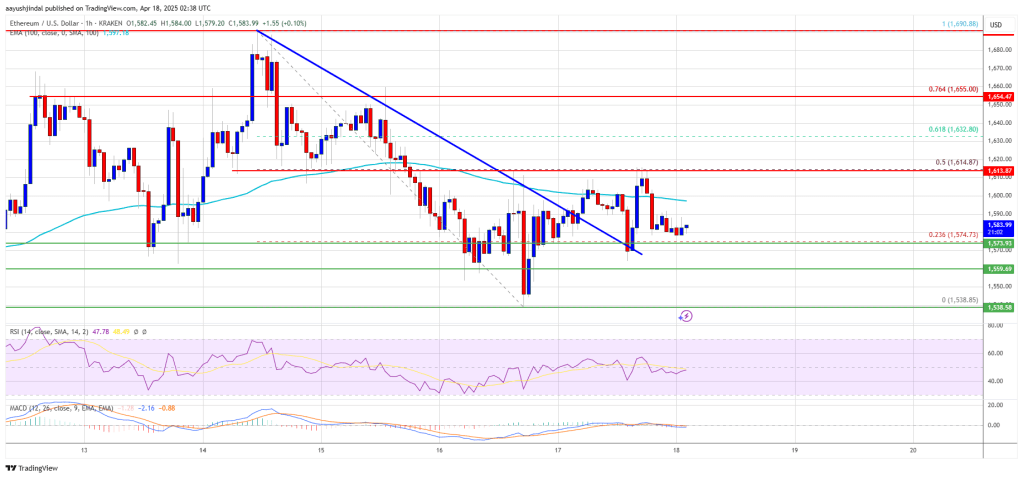
A clear move above the $1,655 resistance might send the price toward the $1,700 resistance. An upside break above the $1,700 resistance might call for more gains in the coming sessions. In the stated case, Ether could rise toward the $1,750 resistance zone or even $1,800 in the near term.
Another Drop In ETH?
If Ethereum fails to clear the $1,615 resistance, it could start another decline. Initial support on the downside is near the $1,5750 level. The first major support sits near the $1,540 zone.
A clear move below the $1,540 support might push the price toward the $1,480 support. Any more losses might send the price toward the $1,420 support level in the near term. The next key support sits at $1,400.
Technical Indicators
Hourly MACD – The MACD for ETH/USD is losing momentum in the bearish zone.
Hourly RSI – The RSI for ETH/USD is now below the 50 zone.
Major Support Level – $1,540
Major Resistance Level – $1,655
-

 Altcoin21 hours ago
Altcoin21 hours agoHow Rising Solana Network Inflows Could Drive SOL Price to $150?
-

 Bitcoin21 hours ago
Bitcoin21 hours agoGary Gensler Explains Why Bitcoin Will Outlast Altcoins
-
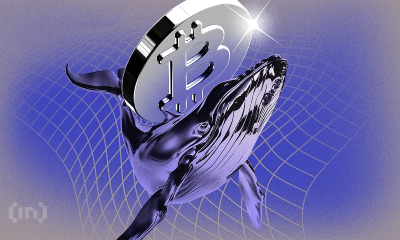
 Market20 hours ago
Market20 hours agoBitcoin Whales Withdraw $280 Million: Bullish Signal?
-

 Altcoin13 hours ago
Altcoin13 hours agoCZ Honors Nearly $1 Billion Token Burn Promise
-

 Market16 hours ago
Market16 hours agoBitcoin Price Poised for $90,000 Surge
-

 Altcoin23 hours ago
Altcoin23 hours agoCrypto Whales Bag $20M In AAVE & UNI, Are DeFi Tokens Eyeing Price Rally?
-

 Market21 hours ago
Market21 hours agoXRP’s $2.00 Pivot Point—A Launchpad or Breakdown Zone?
-

 Market13 hours ago
Market13 hours agoOver $700 Million In XRP Moved In April, What Are Crypto Whales Up To?






